The Richard L. Benjamin Archive of Borscht Belt Tourism History contains artifacts from the countless hotels and bungalow colonies that once functioned in New York’s Sullivan and Ulster Counties. A large majority of the collection comprises over 500 documents, postcards, and images from the hotels. In addition, a variety of ephemera, go-withs, and relics from the industry are also featured including ashtrays, silverware, cocktail swizzle sticks, and soap bars. Among the collection’s more unusual items include an Adirondack-style streetlamp from Grossinger’s, a section of blue tile flooring from the Concord Hotel’s indoor pool, and an assortment of Jeris Hair Tonic bottles—produced by the Concord Hotel’s founder Arthur Winarick.
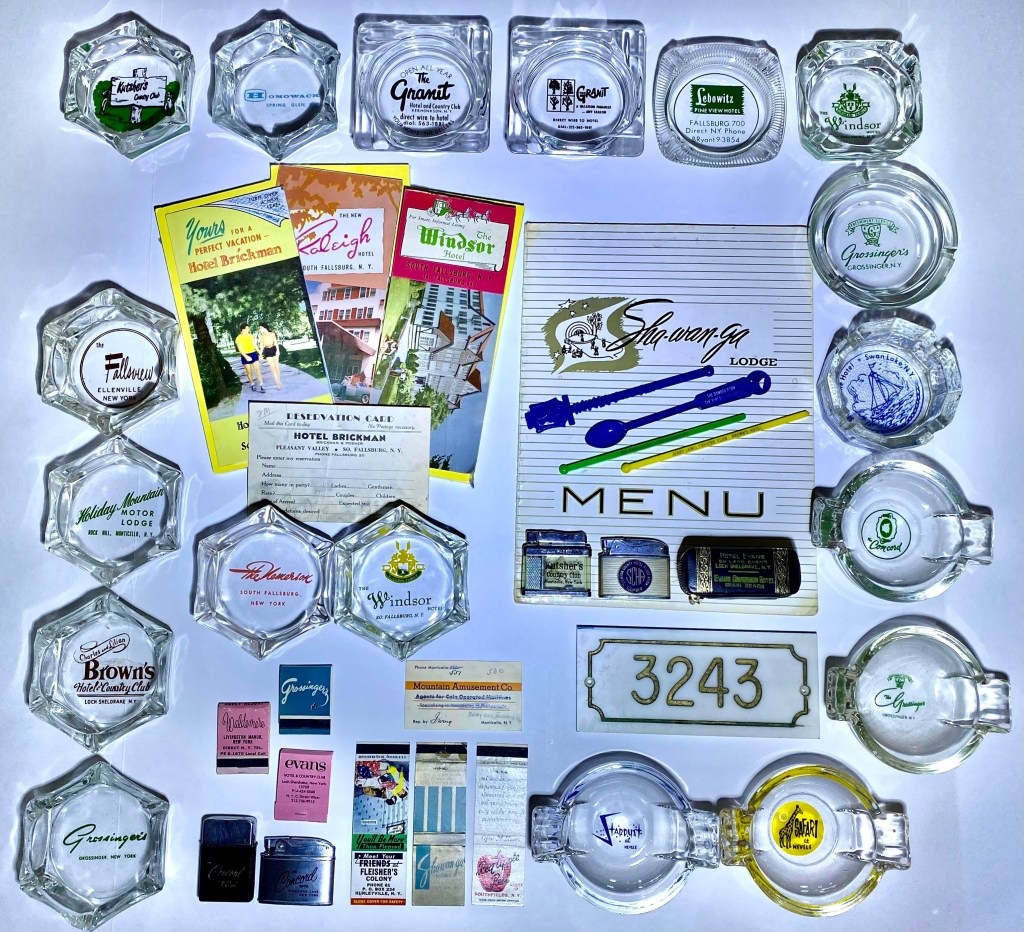
A list of hotels and businesses represented in this collection is featured below:
Ambassador
Blue Eagle
Brickman
Brown’s
Butler
Concord
Commodore
Esther Manor
Evans
Fallsview
Flagler
Fleisher’s Colony
Gibber
Gilbert’s
Granit
Greenwood Inn
Grossinger’s
High View Hotel
Homowack
Hotel Glass
Kramer’s
Kutscher’s
Laurel Park
Laurels
Lebowitz Pine View Hotel
Linden Lawn
Melbourne
Monticello Rooming and Bungalow Association
Nassau
Nemerson
Nevele
Orseck Boys
Pine Tree Villa
Pines Hotel
Pioneer Country Club
President
Raleigh
Red Apple Rest
Riverside
Rubin’s
Schenk’s Paramount
Sha Wan Ga Lodge
Stevensville
Sullivan County Hotel Association
Sunrise Manor
Swan Lake
Tamarack
The Rita
Valley View House
Villa Roma
Waldemere
Wayside Inn
White Roe Lake
Windsor
Zalkin’s
Zieger
About The Borscht Belt: New York’s Lost Tourism Icon
When someone says “The Catskills,” thoughts of towering mountains, grand ski slopes, and picturesque scenery may come to mind. This is consistent with much of the Catskills in both Ulster and Greene counties, but in nearby Sullivan County as well as southwestern Ulster County, this region was known better as “The Borscht Belt.” Around 1,000 square miles in size, it was once a premier tourist destination of New York State featuring over 500 hotels and bungalow colonies. The Borscht Belt ultimately grew out of the intent to foster agriculture within Sullivan County. Unlike the nutrient-rich black dirt and relatively flat terrain that made nearby Orange County, a dairy farming mecca, Sullivan County’s land was mountainous and rocky. Seeking to capitalize on the region’s scenery and clean air instead of its soil, many of these farmers turned their homes into boarding houses. Given the Anti-Semitic environment that existed during this era, New York City’s Jewish population was attracted to Sullivan County’s favorable weather compared to the city’s oppressively hot summers. Soon, hundreds of hotels and bungalow colonies sprouted across the countryside catering to this ever-growing population that would make this portion of the Catskills legendary.

From 1900 to 1950, the establishments of the Borscht Belt heavily relied on the surrounding scenery to attract city dwellers looking to escape hot summer temperatures and seek clean air. However, in the latter half of the twentieth century, a new phenomenon occurred. Amenities such as swimming pools and skating rinks that were once reserved for only the most luxurious settings could now be seemingly implemented anywhere. This led to the concept of the “fortress hotel” where the thrill was no longer based upon the surrounding environment but rather contained within the hotel itself. Resorts not only featured hundreds if not thousands of rooms but also boasted indoor and outdoor swimming pools, tennis courts, skating rinks, ski slopes, massive entertainment halls, and cavernous dining rooms. A reoccurring aspect within the growth of these mammoth resorts was their distinct architecture. The Borscht Belt’s earlier hotels featured a design known as “Sullivan County Mission Style” with utilized stucco walls and prominent towers. Additionally, certain hotels (most prominently Grossinger’s) featured a Tudor style which retained the stucco features yet added wooden inlays similar to structures seen in England. Certain hotels adopted a strikingly modern design that reflected the flashy beachside resorts of the Florida coast. The streamlined white buildings of the Concord Hotel, which housed 1,500 people in its day, were designed by famed architect Morris Lapidus who also commissioned Miami’s Fontainebleau Hotel. In addition, the Nevele’s tower building, often considered to be one of the Borscht Belt’s most recognizable structures, was the product of Lapidus’s former employee Herbert D. Phillips.

No story of the Borscht Belt is complete without detailing the people that it brought together. While it largely served New York City’s Jewish population in its early years, the region soon became one of New York’s preeminent tourist destinations and attracted thousands if not millions. Among the most prominent group of individuals who rose to fame within the Borscht Belt were comedians and entertainers. Names such as Jerry Lewis, Buddy Hackett, Eddie Cantor, Milton Berle, Sid Caesar, and George Burns all became prominent largely due to the Borscht Belt’s ability to generate a diverse audience. Sporting was another important facet of the region, with one of the most famous examples being the period during which Rocky Marciano trained at Grossinger’s. Finally, there were other famed individuals ranging from Civil Rights activist Martin Luther King Jr. to American President Lyndon B. Johnson – who all stayed within the Borscht Belt’s illustrious hotels.
The decline of this region can be traced to two separate events, one of which affected the smaller hotels and the other causing larger resorts to decay. While many cite the period after the late 1970s as the fall of the Borscht Belt, the golden age of Sullivan County tourism was already in swift decline by the early to mid-1960s. In 1965, a fire at the Prospect Inn of Parksville, NY that killed four and injured ten did not directly affect any other hotels. However, smaller hotels struggled to implement the stricter fire safety regulations that resulted from this disaster, as they were already competing against the more adept fortress resorts. Having spent their money on swimming pools and skating rinks, these establishments swiftly closed their doors and, soon, all that remained were the larger fortress hotels. It was at this time when the “three A’s,” a concept undermining the region since the 1950s, ultimately brought the Borscht Belt to an end. The three A’s refer to Air Conditioning, Air Travel, and Assimilation. Where the Borscht Belt once catered to a clientele that sought to escape the oppressive city heat, air conditioning resolved this issue in an economical and convenient fashion. Furthermore, air travel allowed individuals to travel further than ever before for fares comparable to a stay at a Borscht Belt hotel. Finally, growing themes of acceptance and “assimilation” by the late twentieth century gave way to the breakdown of cultural and racial divides which initially fueled the Borscht Belt. In 1986, the famed Grossinger’s Hotel closed, thus sending a bleak message to the few remaining establishments of the Borscht Belt. Out of desperation, these hotels attempted to gain licenses for gambling but came to no avail. By 2000, the only two prominent Borscht Belt hotels still operating close to their original form were the Nevele and Kutsher’s, both of which closed in 2006 and 2013 respectively. In 2018, the region finally gained a casino with the opening of Resorts World Catskills, but it was too late for the Borscht Belt with the new resort standing a few miles from the ruins of the former Concord Hotel. Today, the Honor’s Haven Retreat and Conference Center operates in the former structures of the Fallsview Hotel in Ellenville, NY, and the Raleigh Hotel of South Fallsburg, NY remains open under new ownership. The Villa Roma Resort, despite being designated by some as west of the Borscht Belt region in Callicoon, NY, is the only regional hotel that has remained open since the active yet waning days of the Borscht Belt.
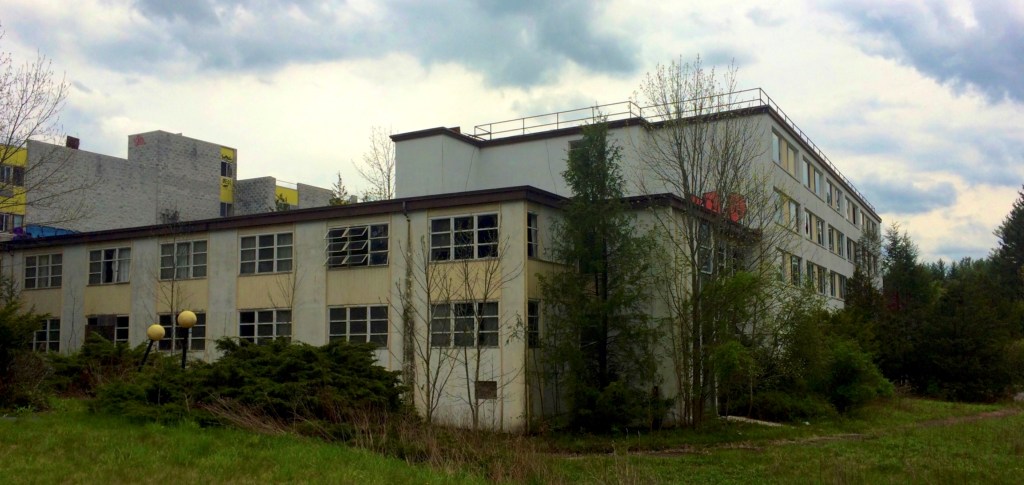
Richard L. Benjamin
Richard L. Benjamin (1935-2020) was a life-long resident of Monticello, NY and owner of Southwoods Antiques. In 2017, I purchased a large quantity of documents from Benjamin’s collection pertaining to Borscht Belt hotels. They were all, in some way, connected to Steingart Associates of South Fallsburg, NY—a printing company. Included within the collection are hundreds of rough drafts as well as completed brochures, menus, postcards, and calendars from hotels such as The Concord, The Granit, The Pines, The Nevele, The Stevensville, and The Windsor. These documents currently constitute the foundation of this collection and provide a rare glimpse into the intricate aspects of this once-prosperous tourism icon.
The collection welcomes those seeking to research the history of New York’s Borscht Belt. Many materials are on display while others are stored in the humidity-controlled archive room.


A collage of hotels represented in the Richard J. Benjamin Collection of Borscht Belt Tourism History.



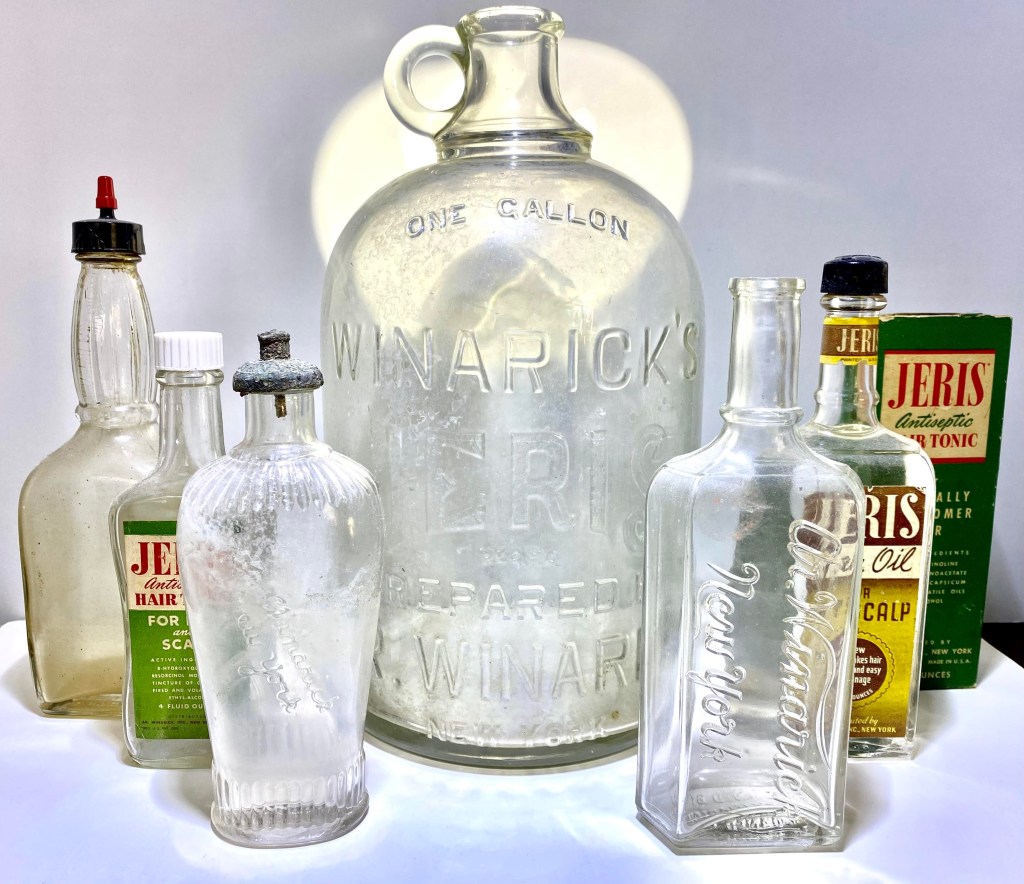
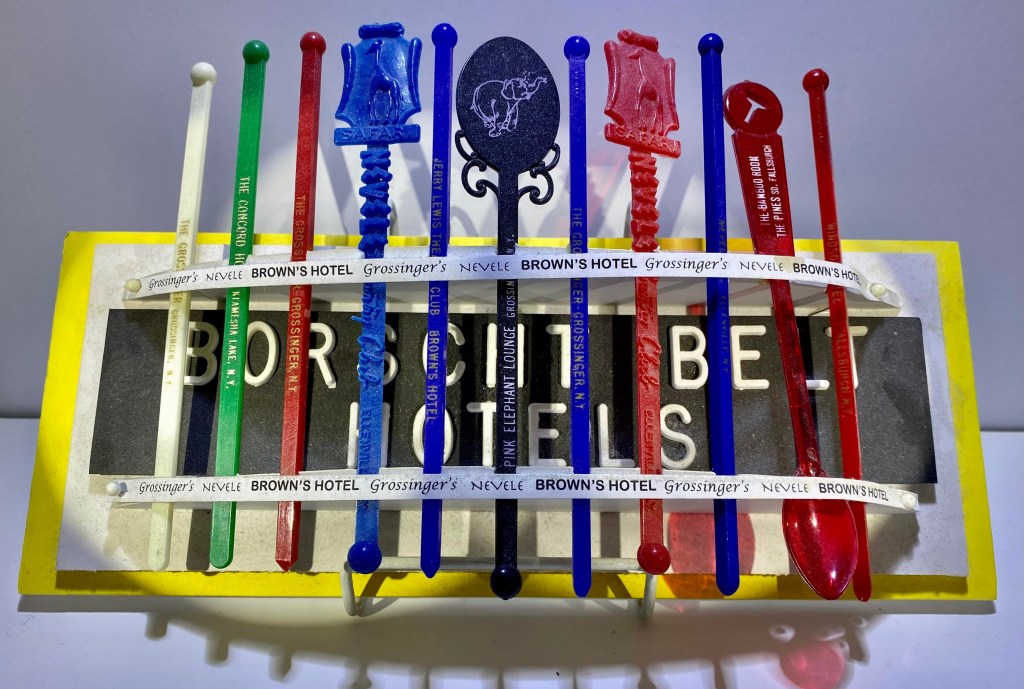

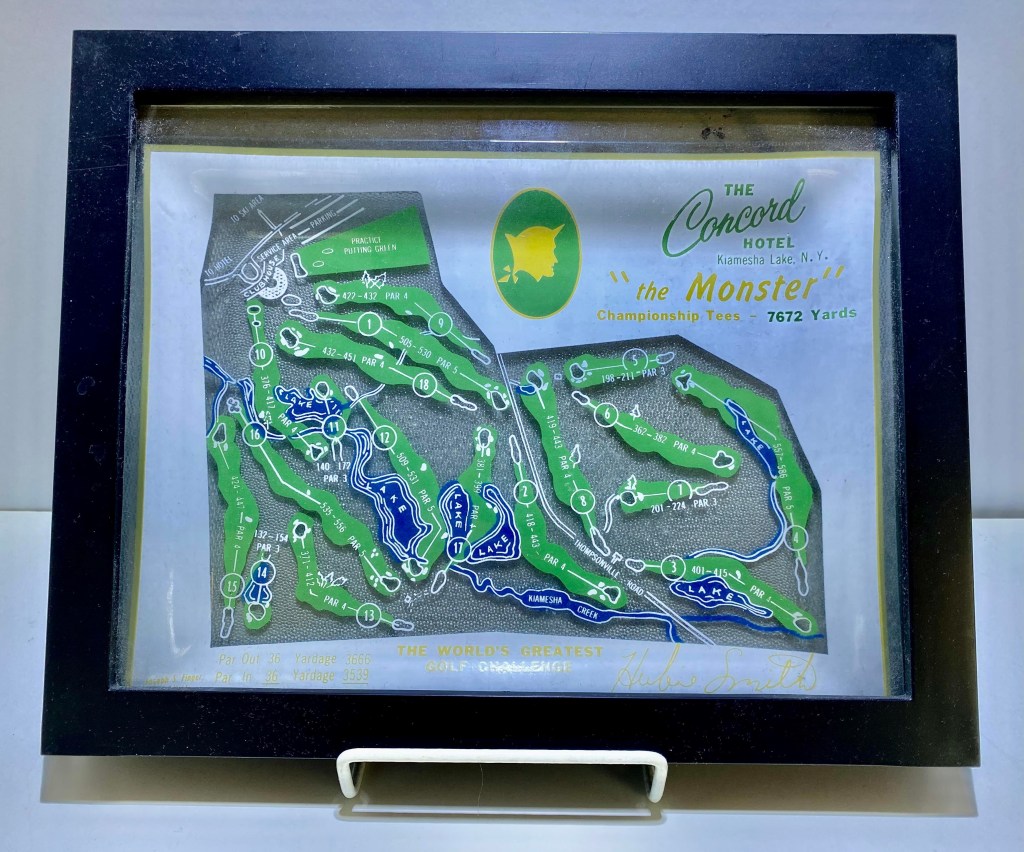
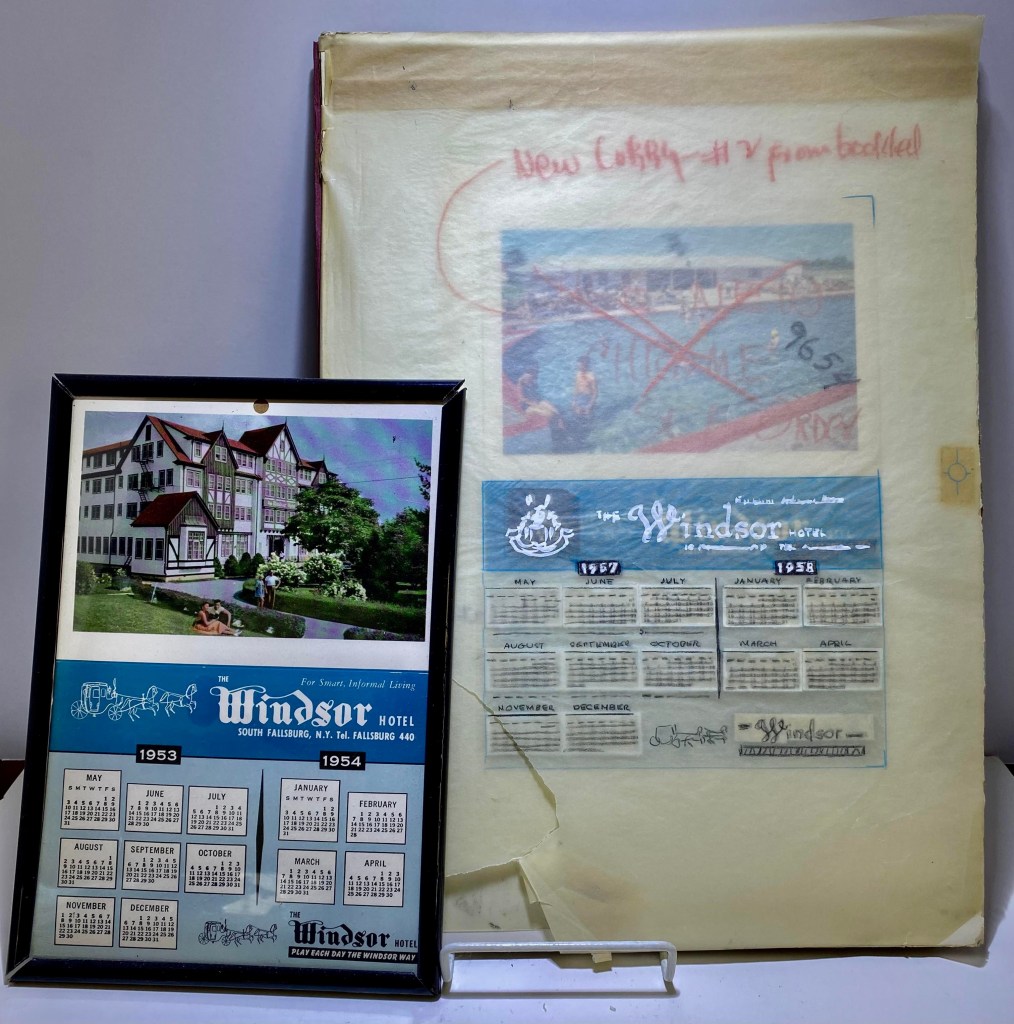

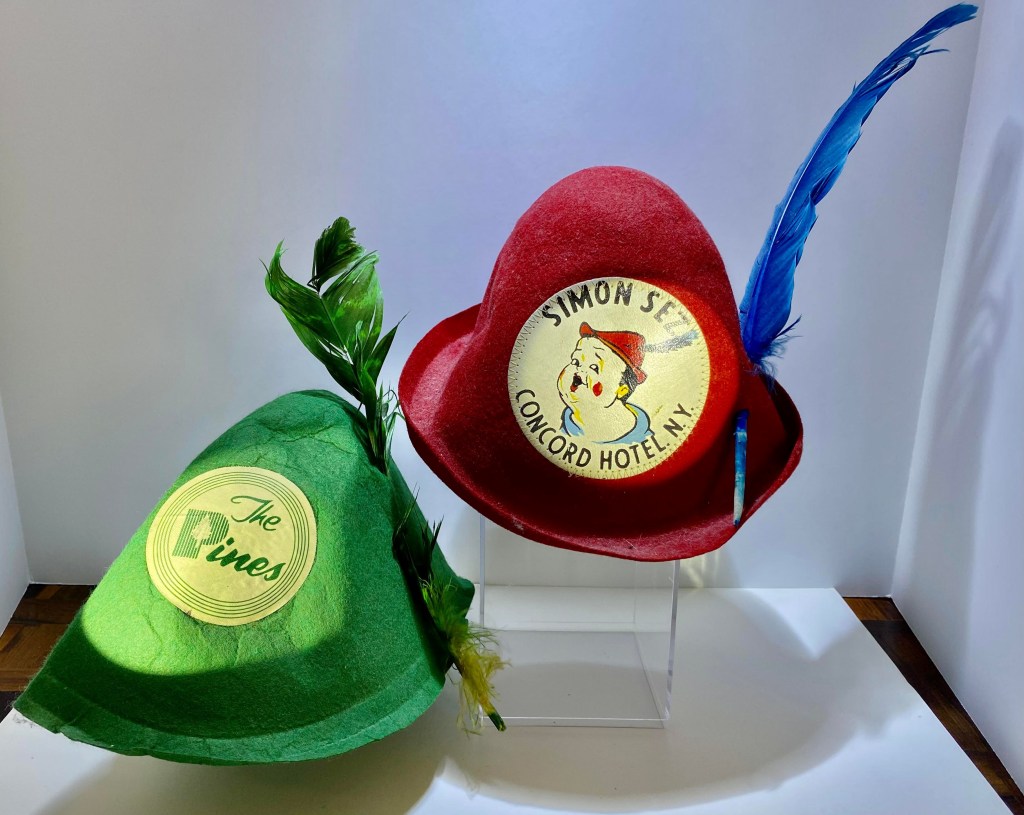
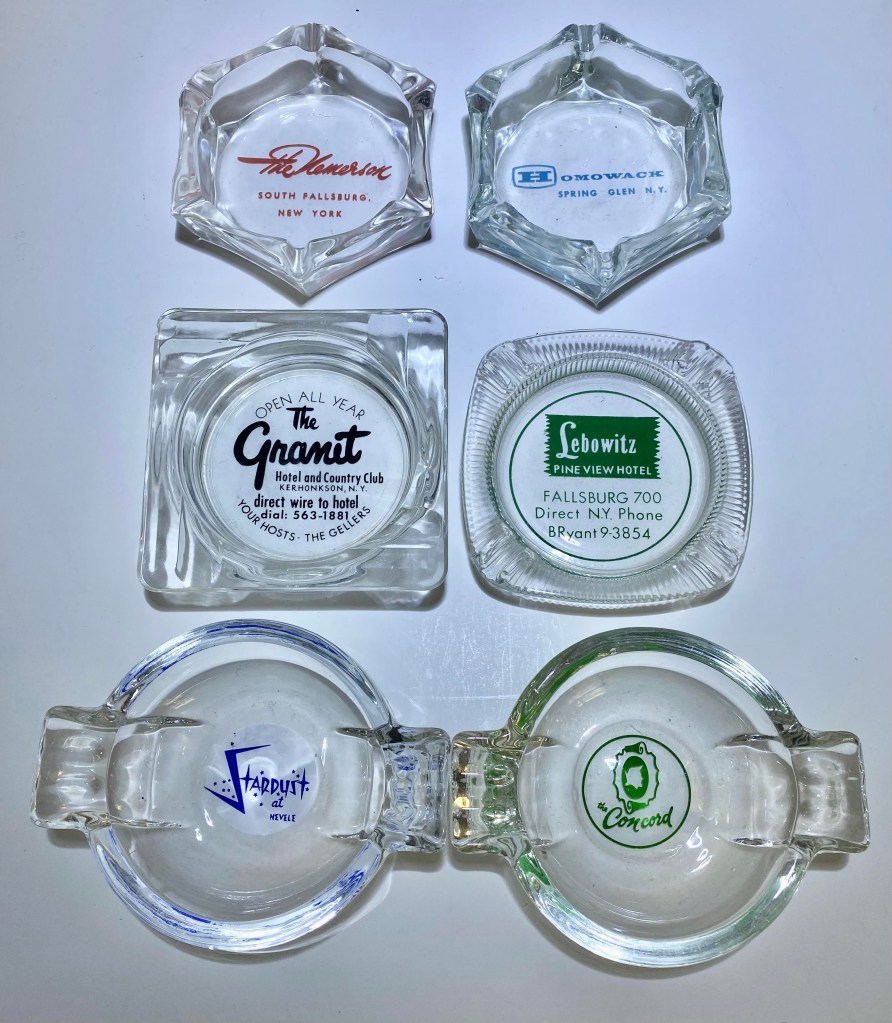
For research inquiries or other questions, please contact me here:
